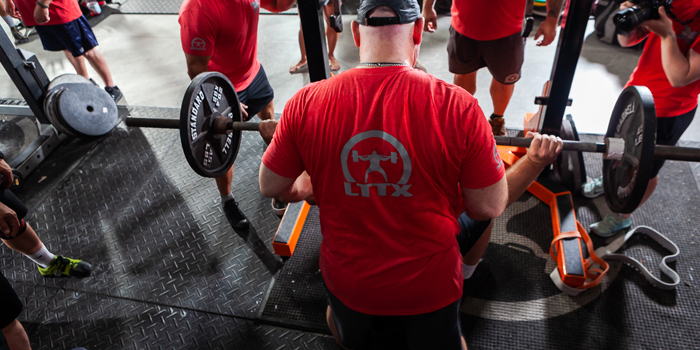
I get a lot of programming questions on Instagram and through email. Mainly lifters ask me to take a look at their programs, asking for advice on what they wrote and if there’s anything I would change.
Questions like these are hard to answer because I’m always going to ask them why they wrote it, why these exercises, why these set and rep schemes, what are your goals, etc.
RECENT: A Strength Athlete's Running Journey
One of the most important aspects of writing a program is being able to explain what you’re doing and why you’re doing it. What’s the purpose of the micro/macro/mesocycles? Why did you choose these exercises, sets, reps, etc.?
I’m going to share a program with you that someone asked for my advice and input on. I know very little about this lifter. I got a little bit of information from them through Instagram but other than that, what I’m writing are my initial thoughts.
I’m going to show you their program, give you my thoughts, then write a 16-week program for this lifter, and briefly explain why I picked what I did.
A lot of coaches on this site will approach this program differently than me. This is my own style of conjugate-based training that I’ve learned and applied over the years. Training has worked for me and for the lifters I work with. This is completely my interpretation of the system and how I use it with beginner and intermediate lifters. It mainly involves heavy lifting, rep work, speed work, three-week waves with a lighter week every fourth week, and PRs.
The lifter who sent this program has been doing powerlifting-specific training for two to three years. Their best gym lifts are a 415-pound squat, 315-pound bench, 435-pound deadlift, and their best competition lifts from 2017 are 365/265/365. They explained to me that they miss in the middle of the squat, off the chest for the bench, and deadlift off the floor.
I watched some of their Instagram videos to get a better idea of what their lifts looked like.
What I saw:
Squat:
- Technique
- Hips first out of hole/chest comes forward
- Middle weak (abs and low back)
- Bracing needs work
Bench:
- Technique
- Bench wide
- Lacking leg drive
- Triceps weak
- Upper back weak
Deadlift:
- Technique
- Deadlifts conventional
- Knees shoot back first
- Spine rounds easily
- Low back not stable/safe
- Bracing needs work
- Need a better hinge
The program they sent me was a 16-week strength building/off-season type of program, as seen below:
My Initial Thoughts on Their Program
Max Effort Lower
- Needs more volume for glutes, hamstrings, low back, torso, etc.
- Needs more variety in main movements
- Heavy hinge work
- Lacks heavy single-leg work. I think this is under-used and underrated in powerlifting. Single-leg training should be a staple in the off-season for the powerlifter. It’s a great way to bring up weaknesses.
Max Effort Upper
- Needs more heavy triceps work
- Needs more variety in main movements
- Needs more volume on shoulders, triceps, and back
Dynamic Effort Lower
- I’m not a fan of pause speed squats with newer lifters. I’ve used them in my training and others’ training, and I never got the result I was looking for, which was more speed out of the bottom in a heavy squat. I have better results with heavy pause squats.
- Needs more variation in movements
- Single-leg work
- Needs more volume on glutes, hamstrings, low back, torso, etc.
- Why farmers?
Dynamic Effort Upper
- I don’t recommend doing speed work into pins for the bench. It doesn’t sound good for your technique, the bar, or your rack.
- I’ve done partial range of movement speed work with the Shoulder Saver Pad and board presses, and this works very well for the more advanced lifter.
- Needs more volume on shoulders, triceps, and back
I’m not sure what the set and rep schemes were for some things, as you will see blank spaces. I’m doing the best I can to figure out what they were trying to do.
They told me they were just putting a program together but didn’t really have the why. Knowing the why is what’s going to help you build your program. I’ll explain my reasoning for my program based on what their videos showed me.
Tips on programming and training
Many people ask me if they can train conjugate without things like bands, chains, and specialty bars. Yes, you can, 100 percent. I do recommend you get a safety squat bar if I personally just had to pick one. The equipment this lifter has is a bar, safety squat bar, rack, plates, and dumbbells.
I consider this lifter to be new to conjugate, so I will be utilizing the template outlined in this article to put this program together.
- I’m big on autoregulation and picking your max effort movement the day of the workout. Base it on how you feel. If you programmed a heavy squat, but you walk in and are like, “Fuck, I want to hit a heavy deadlift variation,” go hit it. The better you get to know yourself and work with a good coach to help, the better the lifter you will become. That will be a game-changer for your training and competing.
- Volume prior to hitting your 90%+ weight on max effort days. Hitting doubles and triples in your warm-up sets. Do 6-10 sets between 60-85%.
- Your goal for the building movement is always going to be 2-4 total reps above 90%.
- Speed work: The percentage is a gauge. If it feels slow, lower the weight. Each rep needs to be done like it’s a max attempt every time.
- I love variety, and I usually give my lifters the freedom to pick their supplemental movements based on what they enjoy doing. If it’s shoulder work, pick your favorite shoulder movements.
- Volume for beginner and intermediate lifters: Shoot, I like it for all lifters. The goal is to find out the highest amount of volume you can recover from and do that.
- The big goal is to generate as much power out of the bottom of each lift.
- NEVER MISS.
The Basic Outline I Used
Max Effort and Dynamic Effort Bench Days
- Building movement/dynamic effort
- Supplemental movement: heavy triceps
- Accessory movement
- 2-3 exercises based around lats, upper back, and rear delts movements
- High rep arm work
Lower Body Days
- Building movements/dynamic effort
- Supplemental movement/dynamic effort
- Accessory movement. During an off-season, I prefer to use single-leg work in all 3 planes of motion.
- 2-3 exercises based around hamstrings, glutes, lower back, and quads
- 1-2 exercises based around the trunk and calves
You can plug and play whatever exercises you want into this based on your weaknesses.
Thoughts on Designing Each Day
Max effort lower day thoughts
I personally like to run dynamic effort deadlifts after my max effort lower movement. The main reason is that deadlift is the last lift in a meet. After two PRs in the squat and bench, you need to be able to produce some serious power while fatigued. When you decide to speed pulls is completely up to you. Play around with it and see what works for you.
Now you can either rotate your building movement as squat and deadlift every other week over a six- to eight-week cycle or you can rotate between squat and deadlift weekly as seen in the example.
What I feel this lifter needs:
- More heavy hinge work
- Get hamstrings big and strong
- Pause work to build strength out of hole and utilize the safety squat bar to build even more upper back strength
- Deadlift the lifter over all just needs to get stronger so I’ve decided to hit it from multiple angles. I also decided to train and strengthen the opposite stance.
Max effort upper day cycle thoughts
Typically, if my building movement is a partial range of motion movement, like a floor press or board press, then my supplemental will be a full range of motion. If my building movement is a full range of motion my supplemental will be a partial.
I’ll rotate between full range and partial range weekly.
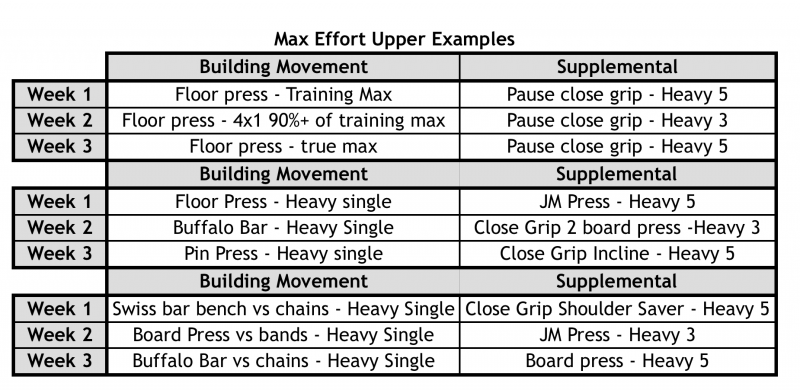
What I feel this lifter needs:
- Heavy triceps work
- More close grip/regular
- Volume: lats, upper back, and triceps
- Speed work off the chest
- Heavy partial work
Dynamic effort both lower and upper thoughts
Don’t use a competitive max for speed work.
Percentages are guidelines; again, autoregulate. As you’re warming up, gauge the bar speed. When the weight feels like it’s not too light and still easy and you’re owning it, use that as your working weight. Go a little heavier the following week.
The lifter doesn’t have bands or chains, so that’s why I changed up from squat to box squat and comp deadlift to opposite stance. Use a little more variety. You can do partial range speed work and strength-speed work for a three-week wave where you use heavier weights.
Use volume on these days. This is where the repetition effort comes in.
Dynamic effort days are great for honing in on technique. Every set should be taken seriously as if it’s a max effort attempt.
What I feel this lifter needs on these days:
- Volume to get the muscles bigger and stronger
- Speed out of the bottom of all lifts
If you have any questions, hit me up on IG @nic_bronkall or email me at nic@thestrengthpursuit.com.










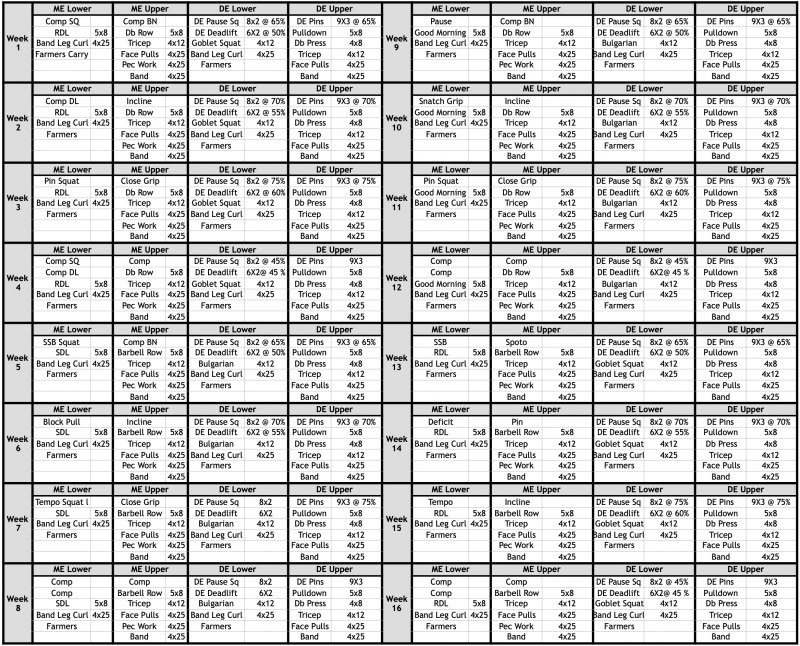
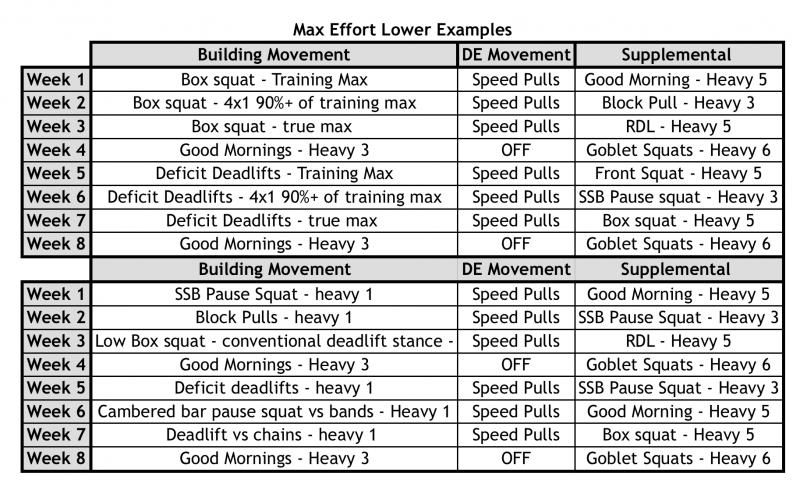
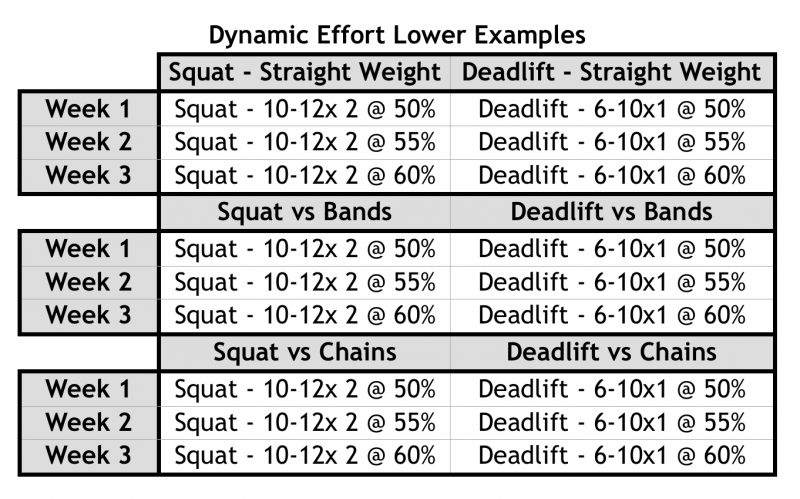
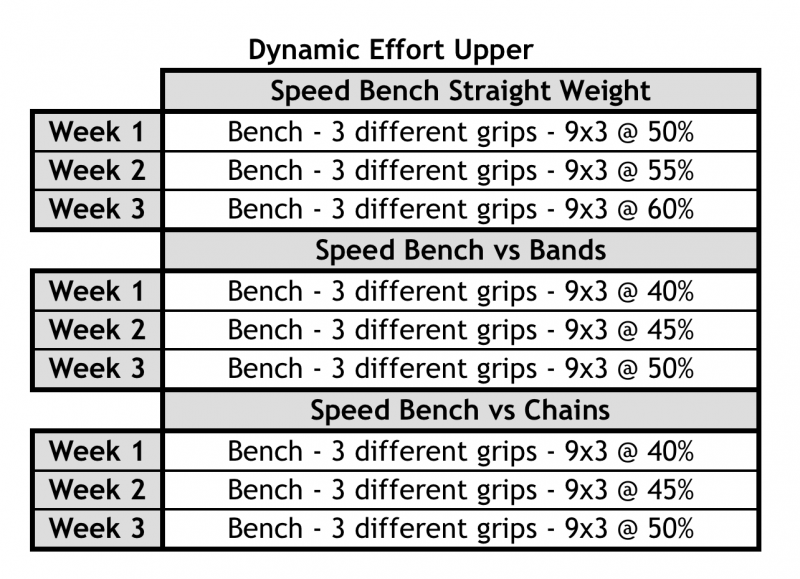
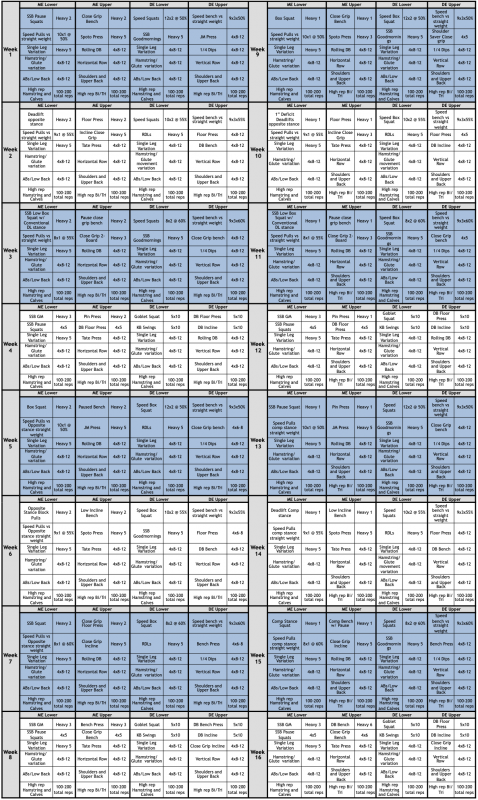
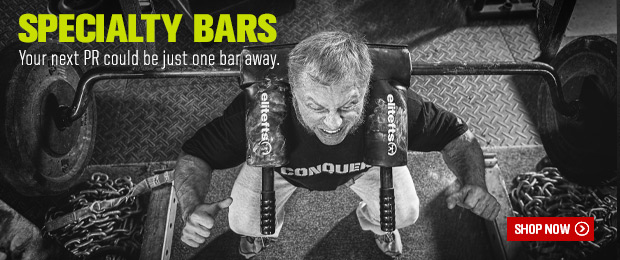
Thanks!!
Adam